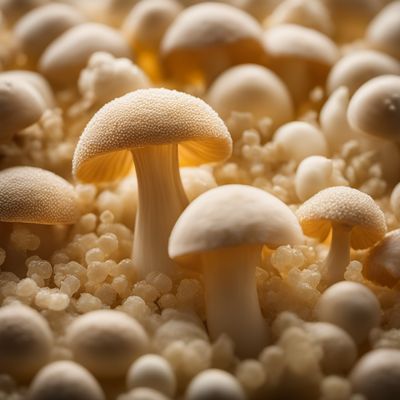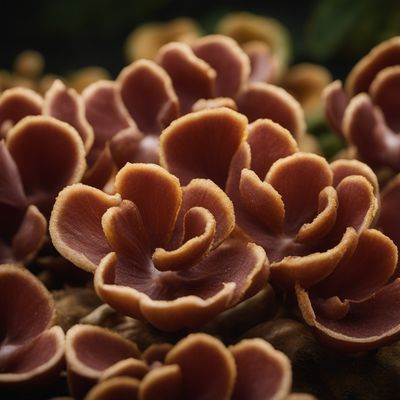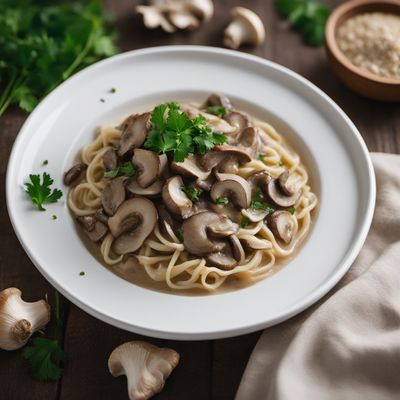
Ingredient
Snow mushrooms
The Delicate Beauties of the Forest
Snow mushrooms are prized for their delicate and gelatinous texture, which becomes silky and smooth when cooked. They have a mild, slightly sweet flavor that pairs well with a variety of ingredients. These mushrooms are often used in Chinese cuisine, particularly in soups, desserts, and stir-fries. They are also valued for their potential health benefits, including promoting healthy skin and boosting the immune system.
Origins and history
Snow mushrooms have a long history in Chinese cuisine and traditional medicine. They are believed to have originated in China and have been used for centuries for their medicinal properties. In Chinese culture, snow mushrooms are associated with beauty and are often used in dishes that promote healthy skin. Today, they are cultivated in various parts of Asia and are also enjoyed in other cuisines around the world.
Nutritional information
Snow mushrooms are low in calories and fat, making them a healthy addition to meals. They are also a good source of dietary fiber and contain various vitamins and minerals, including potassium and iron. Additionally, snow mushrooms are believed to have antioxidant and anti-inflammatory properties.
How to select
When selecting snow mushrooms, look for specimens that are firm and plump, with a clean and smooth surface. Avoid mushrooms that are slimy, discolored, or have a strong odor. Fresh snow mushrooms should have a slightly sweet aroma. If purchasing dried snow mushrooms, ensure they are free from mold or clumps and have a pale, translucent appearance.
Storage recommendations
To maintain the freshness of snow mushrooms, store them in a paper bag or a loosely closed container in the refrigerator. Avoid storing them in airtight bags or containers, as they need some airflow to prevent moisture buildup. Dried snow mushrooms should be kept in a cool, dry place away from direct sunlight.
How to produce
Snow mushrooms can be cultivated at home using mushroom-growing kits or purchased fresh or dried from specialty stores or Asian markets. They require a cool and humid environment to grow, making them suitable for indoor cultivation. With proper care and attention to temperature and humidity levels, snow mushrooms can be successfully grown by amateur mushroom enthusiasts.
Preparation tips
Snow mushrooms can be prepared in various ways depending on the dish. They are commonly used in soups, where their gelatinous texture adds body and richness. They can also be stir-fried with vegetables and meat, or added to desserts such as sweet soups or jellies. When cooking with snow mushrooms, it is important to soak them in water to rehydrate before use, as they are often sold dried.
Culinary uses
Soups, stir-fries, desserts
Availability
Asia
More ingredients from this category » Browse all

Pom-pom blancs
The Delicate Delight: Exploring the World of Pom-pom Blancs

Enokitake
The Delicate Beauty of Enokitake Mushrooms

Other cultivated fungi
Exquisite Edible Fungi

Corn smuts
The Mysterious Corn Fungus

Shiitake
The Mighty Shiitake

Paddy straw mushroom
The Golden Fungi

Fusarium venenatum
The Fungal Protein: Fusarium Venenatum

Horse mushrooms
The Majestic Fungi of the Earth

Nameko
The Versatile Mushroom

Jew's ears
Nature's Edible Fungi: Unveiling the Secrets of Jew's Ears

Pleurotus
The Versatile Oyster Mushroom

Common mushrooms
The Versatile Fungi
Recipes using Snow mushrooms

Creamy Mushroom Stroganoff
Velvety Mushroom Delight

Cheng Tng - Refreshing Chinese Dessert Soup
Cooling Delight: Cheng Tng - A Sweet Symphony of Chinese Flavors

Huaiyang-style Sweet Soup
Silky Delights: Huaiyang-inspired Sweet Soup

Sishen Soup with Nourishing Herbs
Healing Elixir: Sishen Soup to Nourish Your Body and Soul